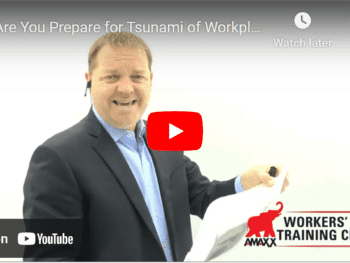Employees can be in and out of the course and scope of employment many times while on the job. Most employers associate course and scope to apply to off premises operation which requires the employee to be in a direct time, place and position that furthers the employers business.
However, it may apply to on premises claims as well. Horse play, sexual misconduct, intentional violation of duties, safety disregards, and self-inflicted injuries are just several such instances for deviation in course and scope of employment.
While jurisdictions vary greatly on waiting periods, benefit rates, exposures, disability rating methods and other wide ranging topics, they all agree that the injury or illness must arise out of the job scope and in the course of employment.
Tests to Determine Course and Scope:
There are three basic tests to prove a case compensable, questionable, or non- compensable.
- Course of Employment means the injury or illness, must occur on the employer premises, in a mandated location, or in a location where it is reasonable for the employee to further or conduct the employer’s business. The employee must also be able to meet job performance standards and requirements. This does not include adherence to defined or regularly scheduled hours. It also allows for different working environments, and relationships.
- Arising out of the employment means there must be a direct correlation for the employee to be furthering the business of the employer or the employer directly benefitted from the activity.
- Scope of employment has tests of its own:
- Analyze the employer’s direction and control of the employee at the time of loss.
- Analyze the employers ability to foresee the activities of the employee in completing the task or tasks at hand.
- Analyze the employee’s motivation.
Investigating Claims to Acertain Course and Scope:
- Start with the contract of hire or employment. Is the claimant a true employee with a contract of hire a job description? Is the employee on the payroll? Does the employee receive all corporate benefits?
- For loaned employees, temporary employees or a contract employees review contracts and insurance endorsement that the injured person is covered under another workers compensation program?
- Through statements and performance records determine compliance with these contracts. Excessive control by the employer or unusually extended periods of time with one employer have been used to establish employment
- Volunteer people doing duties for an employer must meet strict standards in order to not accidently create an employer employee relationship. Explore these state rules and be certain the employer is in compliance.
- When employment is verified, take very detailed statements from the employee, the employer and any witnesses. The statements must include what directions existed and how each party interpreted them.
- Did the employer allow the employee to have discretion or leeway from the instructions? How much? How long? Did it comply with usual and customary standards?
- What equipment was given to the employee? How, when and where was it to be used? Was the equipment in proper working order?
- Occupational disease claims must explore if the public at large is exposed to the same conditions that the employee is claiming was due to the employment. They must determine medical connection to underlying pathologies, job conditions, environment, and products used by the employee.
- What normal functions impact the task? What was the employee doing at the exact time of the injury? Was the employee in direct compliance with furthering the employer’s business? Were there any violations of instruction or expected normal performance? Was there substance impairment, criminal activity, the taking of unnecessary or dangerous risk?
- Did the employer have any control of the premises where the injury occurred?
- The claim technician must have specific guide lines for all questions and issues needed for clarification and proof. All questions need to be designed to obtain the information that will either prove or disprove the course, scope and arising out of the employment?
- Investigate or have the scene of the loss investigate. Take photographs, make diagrams, and describe the scene in detail.
Summary:
Employees can leave the course and scope both on and off premises. It can occur anytime during work operation. Investigations must be through and meet the three tests covering course and scope. The investigation must be documented by fact and performances by both employer and employee.
Author Michael Stack, Principal, COMPClub, Amaxx LLC. He is an expert in workers compensation cost containment systems and helps employers reduce their work comp costs by 20% to 50%. He works as a consultant to large and mid-market clients, is co-author of Your Ultimate Guide To Mastering Workers Comp Costs, a comprehensive step-by-step manual of cost containment strategies based on hands-on field experience, and founder of COMPClub, an exclusive member training program on workers compensation cost containment best practices. Through these platforms he is in the trenches on a monthly basis working together with clients to implement and define best practices, which allows him to continuously be at the forefront of innovation and thought leadership in workers’ compensation cost containment. Contact: mstack@reduceyourworkerscomp.com.
©2015 Amaxx LLC. All rights reserved under International Copyright Law.
Do not use this information without independent verification. All state laws vary. You should consult with your insurance broker, attorney, or qualified professional.










